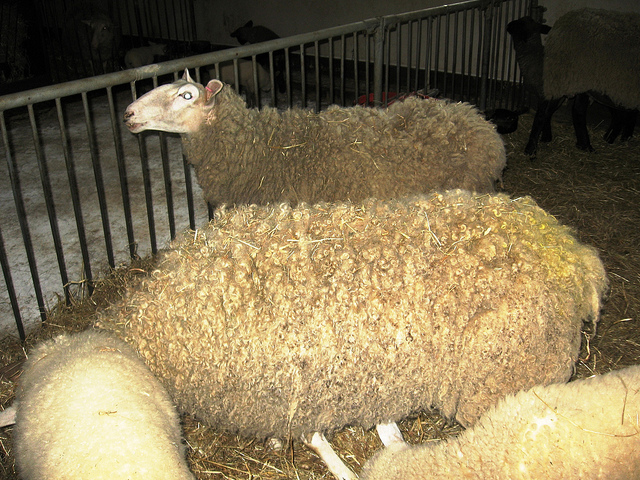Once a year on the May long weekend, the Canada Agriculture Museum puts on its Sheep Shearing Festival. It is held on the Saturday, Sunday and Monday of the Victoria Day weekend. After my excursion to the see the Flotilla on Dows Lake, one of the signature events of the Tulip Festival, I took a slow walk on the western shores of Dows Lake past a serene nature area towards the Canada Agriculture Museum. As you ascend up a small hill from Dows Lake towards the museum, you get a beautiful view of downtown and the eastern part of Ottawa and it’s a great location for a bike ride or a stroll.

Beautiful view looking east over Dows Lake
Approaching the Canada Agriculture Museum from the east you first see extensive ornamental gardens that at this time featured a variety of spring flowers and entire rows of blooming lilacs. The Sheep Shearing Festival was held in one of the main buildings and I made myself comfortable in the first row of seating right next to the stage.
It was about 10 minutes before the next round of sheep shearing which takes place every half hour during the May long weekend. The announcer introduced me to a man called Dave, one of the herdspersons at the Canada Agriculture Museum who looks after the various animals, e.g. beef cows, horses, sheep, goats, pigs and rabbits. He explained to me that the Canada Agriculture Museum is a working farm and part of the Canada Science and Technology Museum. Its mandate is to teach agriculture awareness, particularly to children who have never even been on a farm.

Approaching the Canada Agriculture Museum
Dave went on to explain that the beef cattle raised at the Museum are sold for reproduction and as meat. Milk from the Museum is also sold on the market and the income from these various activities helps to offset the cost of running the museum. Dave mentioned that at Easter about 12,000 people attend their special events which include an Easter egg hunt as well as a display of Easter bunnies.
There is no doubt that Dave is an expert in agriculture: in addition to working as a herdsperson for the Museum he also runs his own farm: some time ago he converted a very labour-intensive dairy farm into a less demanding beef farm, located about 20 minutes south of Ottawa. After this interesting introduction to the world of farming, the sheep shearing demonstration was just about to get underway.

The Horse and Cattle Barn at the Canada Agriculture Museum
The announcer asked the crowd, many of whom consisted of families with young children, what the purpose is of shearing sheep. A variety of interesting responses came forth, particularly from the young members in the crowd: “because the sheep get too hot”, “because we need sweaters”, finally someone said that sheep get sheared because we need their wool. Ross, a tough-looking but gentle professional sheep shearer came up on the stage, accompanied by an initially reluctant animal companion: a very woolly looking grown-up female sheep whose body posture indicated that she wasn’t at all happy about being on this stage.
With the experienced grip of a professional shearer, Ross grabbed the animal by its legs, turned it around and sat the animal down on its rear end, supported against his lower legs. What I found amazing was that the sheep, that had originally been battling him and didn’t want to come on stage, turned into a totally docile and compliant animal, once it was sitting on its rear end, with its front legs up in the air.





